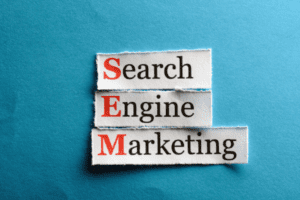For many companies, the idea of compliance with the ADA may seem foreign. Most people think of the ADA only in terms of building codes and public accessibility, but Title II of the ADA does extend to web services as well. For instance, government entities that offer 24/7 services through their websites are expected to offer a variety of accessibility for both the hearing and vision impaired. Here are some of the things you should be considering as you manage your web design.
Applicability of ADA Compliance
The first thing you need to know is whether or not your website falls under ADA compliance rules. In the past ADA compliance only applied to physical locations of businesses and government entities, but several recent lawsuits have extended this legislation to cover even online real estate associated with these businesses. Basically, if your physical business location is required to meet ADA standards, your website is too. That should clear up any doubt about whether or not you need to go the extra mile when designing your site.
How Do Users Access Your Site?
Regardless of whether or not your site falls under the ADA requirements, you should always be cognizant of how users are accessing your site. At face value, you may not realize that a number of people with disabilities are accessing your site via specialized software programs. From your end, it is difficult to distinguish these users from any other user. However, from their end of the pipeline, your site may not be very friendly at all. Screen readers and other software programs are an important part of their user experience, and your content may not be legible to these systems, leaving users with large blanks in context and information.
How to Improve the User Experience
There are a number of ways to improve the user experience and meet ADA compliance standards. For instance, the biggest culprits are images that do not have textual explanations. For those with low or no vision, a screen reader needs a text explanation to give the end user. Another example is text brochures and price lists that are only available in PDF or image form. Again, screen readers may not be able to open or interpret the text in these documents.
Finally, for those with limited vision, it is important that users are able to adjust the colors of your site or change the size of the images and text to meet their needs. While your design team has invested heavily in the color and aesthetics of your site, some users may be unable to see specific colors on the spectrum, and adjusting all websites into a color scheme that they can read is an important part of their user experience. These are just a few ways you can bring your site up to par for the forgotten end users.
ADA Compliance Web Standards
As of January 2018, there is now a published set of standards for website ADA compliance that has been adopted internationally. The Web Content Accessibility Guidelines 2.0 or WCAG 2.0 are the most up to date standards that all ADA sites must meet. These guidelines are meant to help web creators build sites that are perceivable, operable, understandable and robust. This means that the sites can be used in any environment with equal effectiveness for users with any disability.
If your website is in the construction process, now is the time to start thinking about ADA compliance. Even if you are not required to meet these guidelines on your own, it is always worthwhile to consider how users may perceive your site if you have not made it accessible to them.















